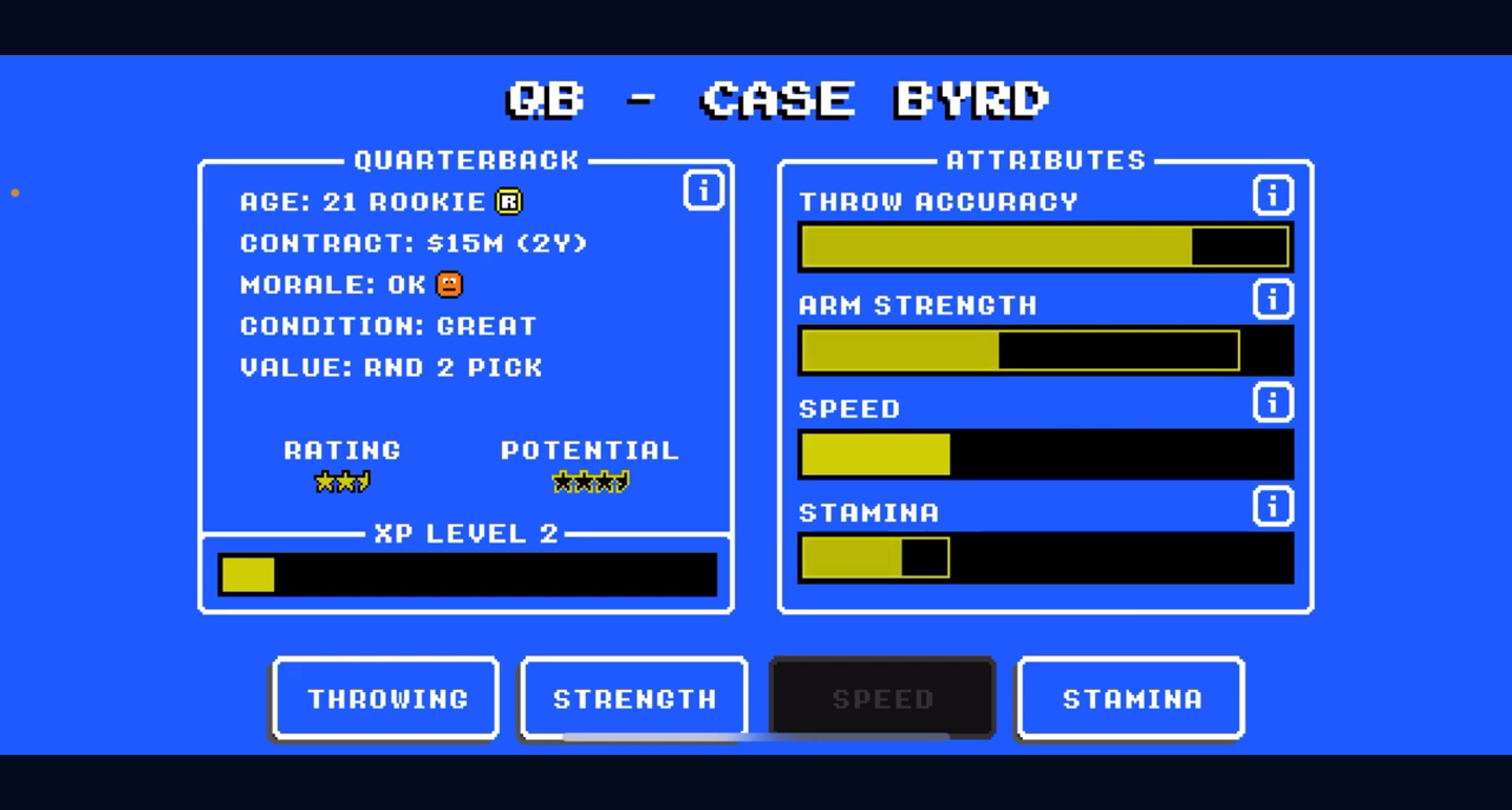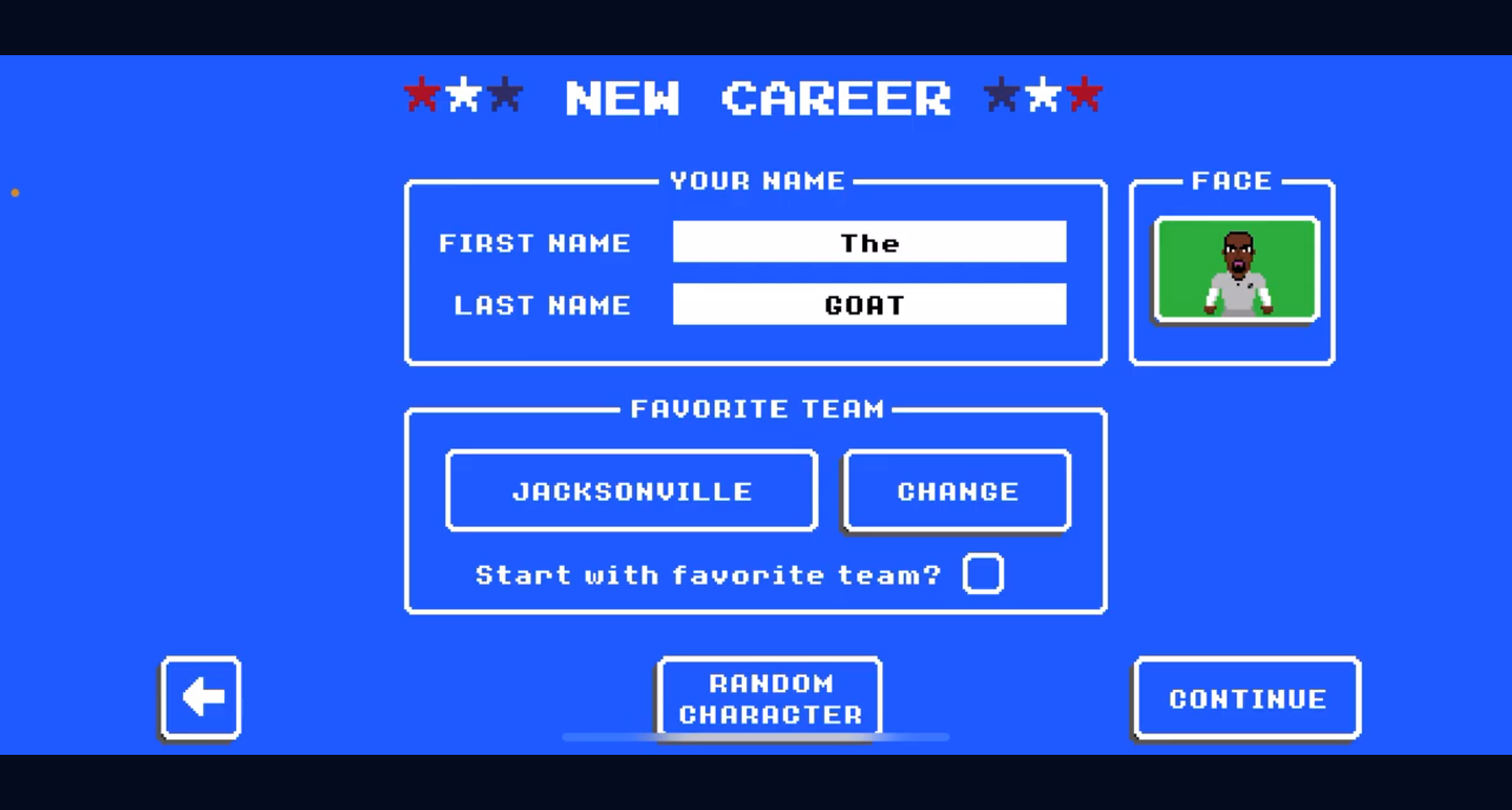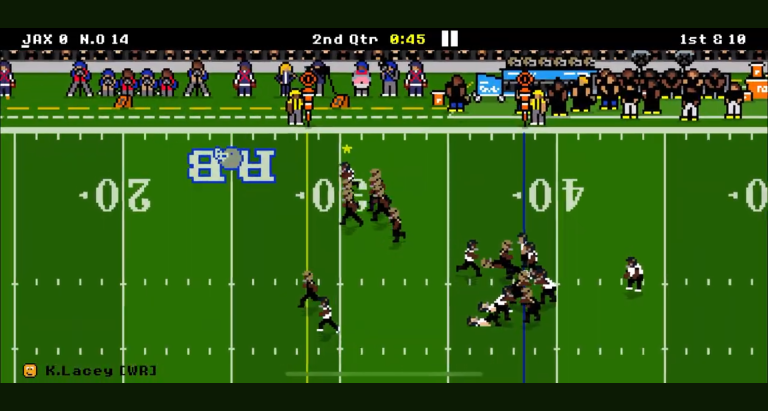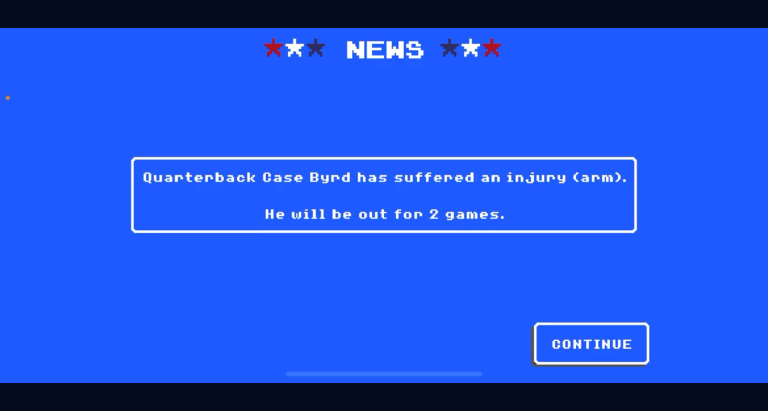Retro Bowl is a captivating sports game that immerses players in the realm of football, combining strategy and timing with the excitement of the game. At the heart of the action is the quarterback, a player whose decisions can make or break a game. Understanding how to run with the quarterback in Retro Bowl is essential for those who wish to enhance their gameplay and increase their chances of winning. This article provides players with strategies, tips, and insights into running effectively with the quarterback, allowing them to dominate the field.
Understanding the Basics
What is Retro Bowl?

Retro Bowl burst onto the scene as a nostalgic throwback to classic football video games, capturing the hearts of fans and new players alike. Developed to blend simple mechanics with engaging gameplay, it features vivid graphics and user-friendly controls that appeal to players of all ages. The game offers a unique mix of management mechanics and on-field action, setting it apart in the sports game genre.
Role of the Quarterback in Retro Bowl
The quarterback in Retro Bowl is undeniably a crucial position. A player’s success often hinges on their abilities to read the game, make quick decisions, and execute plays effectively. Key attributes such as speed, agility, and decision-making define a quarterback’s capabilities. Players will need to familiarize themselves with quarterback statistics and continually strive to improve them to maximize their effectiveness in the game.

Controls and Movements
Basic Controls for Running
To excel in how to run with the quarterback in Retro Bowl, mastering the basic controls is fundamental. The joystick allows players to maneuver their quarterback with precision, while specific buttons facilitate sprinting and dodging tackles. Learning to sprint at the right moments and evade defenders is essential for a successful run. Players should practice controlling their quarterback’s movements effortlessly to enhance performance.
Advanced Controls
Once you’re comfortable with basic controls, it’s time to refine your skills. Utilizing advanced techniques like jukes and spins can turn a good run into a great one. Moreover, understanding play-calling and formations can create advantageous situations for the quarterback—setting up for runs when defenses are least expecting it. Experimenting with these movements allows players to unlock new strategies.
Strategies for Running with the Quarterback
Timing and Decision Making
Learning how to run with the quarterback in Retro Bowl involves recognizing when to take off on a run. Effective decision-making revolves around reading the defense. Players should observe the defensive lineup, gauge the opponents’ movements, and predict defensive reactions. Understanding when to run effectively—typically when defenders are out of position—is crucial for successful gameplay.
Utilizing the Field
Optimal field utilization is vital in executing a successful run. Observing open lanes can lead to pivotal yardage gains. Players should master the art of running along the sidelines, taking advantage of the space available. Sprints toward the edges of the field can often yield better results than charging directly into the heart of the defense.
The Importance of Play-Action
Play-action passes are not merely for throwing; they can also create significant running opportunities. A well-executed play-action can freeze defenders, opening paths for the quarterback to exploit in strategic runs. Understanding when to call a play-action will elevate a player’s running game and make their style unpredictable.
Training Your Quarterback
Skills Development
Developing your quarterback’s skills is essential for effective gameplay. Focus on upgrading attributes such as speed and agility through training sessions. Assign practice points to improve these specific areas, as they strongly affect your quarterback’s running abilities. A fully-equipped quarterback can make a difference in close games.
Practice Drills
To improve running efficiency, engaging in specific practice drills is invaluable. Solo drills can focus on movement precision, while multiplayer drills can enhance coordination with team members. Consider creating scenarios where you practice running against different defensive setups to simulate real-game situations.
Common Mistakes to Avoid
Overrunning Plays
One common pitfall is overrunning plays—taking off too early can lead to wasted opportunities. It is important to gauge defensive setups carefully before committing to a run. Understanding the flow of the game helps mitigate this risk.
Ignoring the Defense
Defense adjustments can shift the game’s momentum, so remaining aware of opponent strategies is crucial. Players should always be on the lookout for signs of change—like shifts in defensive formations or matchup mismatches. This awareness allows for quick adjustments that can influence running success.
Not Utilizing Team Support
Another significant mistake is failing to use teamwork effectively. The quarterback should integrate plays that allow for blockers to create openings. Running solo without adequate support can lead to tackles and lost yardage. Engaging teammates and utilizing their blocking skills can dramatically improve running outcomes.
Game Scenarios and Situational Awareness
Running in Different Game Phases
Understanding timing throughout the game is vital for how and when to run. The first half of the game assesses strategies, while the fourth quarter often requires aggressive plays to secure victory. Players should adapt strategies based on the score—being conservative when leading and more daring when trailing.
Adjusting to Opponent Strengths
Tailoring the quarterback’s run strategy to counteract an opponent’s defense is paramount. Analyzing the strengths and weaknesses of the opposing team can guide decisions. Whether they are tough against mobile quarterbacks or struggle to maintain discipline over blitzes, recognizing these traits allows players to optimize their run strategies accordingly.
| Strategy | Description | Importance |
|---|---|---|
| Timing and Decision Making | Recognizing when to run and reading defenses. | Crucial for successful yardage gains. |
| Utilizing the Field | Running in open lanes and along the sidelines. | Maximizes chances of gaining yards. |
| Play-Action | Using play-action to freeze defenders. | Creates unexpected running opportunities. |
| Team Support | Incorporating blockers in running plays. | Prevents tackles and enhances yards gained. |

Conclusion
As you embrace how to run with the quarterback in Retro Bowl, remember that mastering these tactics comes with practice. By employing the strategies discussed, you can elevate your gameplay, outmaneuver your opponents, and lead your team to victory. Experiment with different approaches, as each game is a unique experience. Improvement lies in your ability to adapt and practice consistently. Engage with the Retro Bowl community for further insights and support, enhancing your skills continuously.
Additional Resources
Tutorials and Videos
For in-depth video tutorials on running with the quarterback in Retro Bowl, check out YouTube.
Community and Forums
Join Retro Bowl communities on platforms like Reddit or Discord where players share tips, strategies, and insights to improve their gameplay.
Suggested Further Reading
For more information on improving your Retro Bowl experience, consider reading articles on the GameFAQs.
FAQ
1. How can I improve my quarterback’s running speed in Retro Bowl?
Focus on upgrading speed and agility stats during training sessions. Participating in practice drills specifically targeting these skills can also yield positive results.
2. What are the best plays to use for quarterback runs?
Using play-action plays can create openings, and designed quarterback runs are effective when the defense is spread out. Experimenting with different formations can lead to finding optimal plays.
3. When should I choose to run instead of pass?
Consider running when the defensive formation presents clear gaps, or the defense shifts unexpectedly. Additionally, running may be beneficial when gaining small yards consistently is needed.
4. How do I avoid being tackled during a run?
Learn to utilize jukes and spins effectively and to recognize when to break toward the sidelines to avoid tackles.
5. What role does my offensive line play in running with the quarterback?
Your offensive line provides key blocks that can create openings for successful runs. Support your quarterback by coordinating plays that utilize these blocks.
6. Is there a specific time of the game when I should run more often?
In the fourth quarter, when time is limited, it’s often more effective to take risks with quarterback runs to gain crucial yards.
7. How do I know if a defense is blitzing?
Look for aggressive movements from the defenders before the snap. If multiple defenders are moving toward the line of scrimmage, prepare for a possible blitz.
8. How can I effectively train my quarterback in multiplayer mode?
Work with a friend to simulate defenses while practicing running plays together. This can develop situational awareness and response strategies.
9. Can I customize my quarterback’s skills?
Yes, you can upgrade your quarterback’s skills through training sessions. Focus on aspects that align with your preferred style of play.
10. What are the common mistakes new players make when running with the quarterback?
New players often overestimate their quarterback’s abilities, ignoring defensive setups or failing to use blockers effectively.


